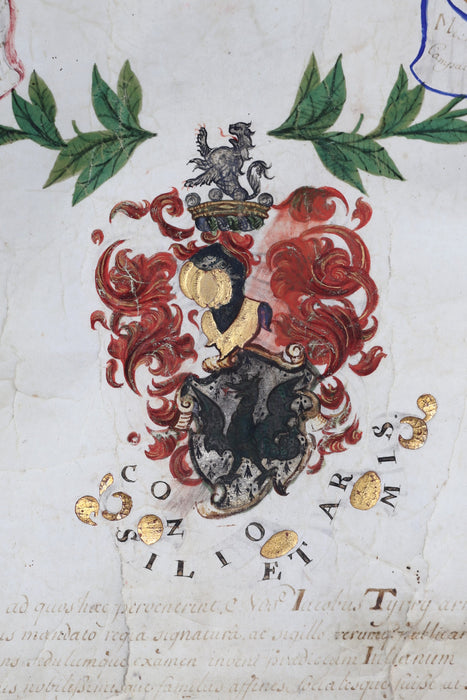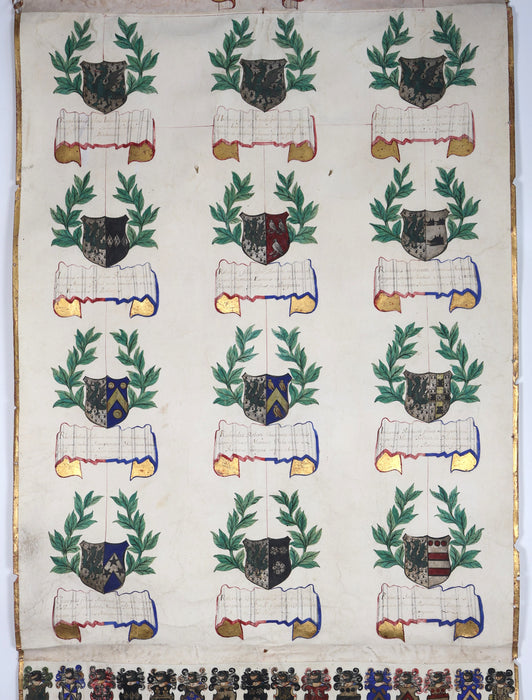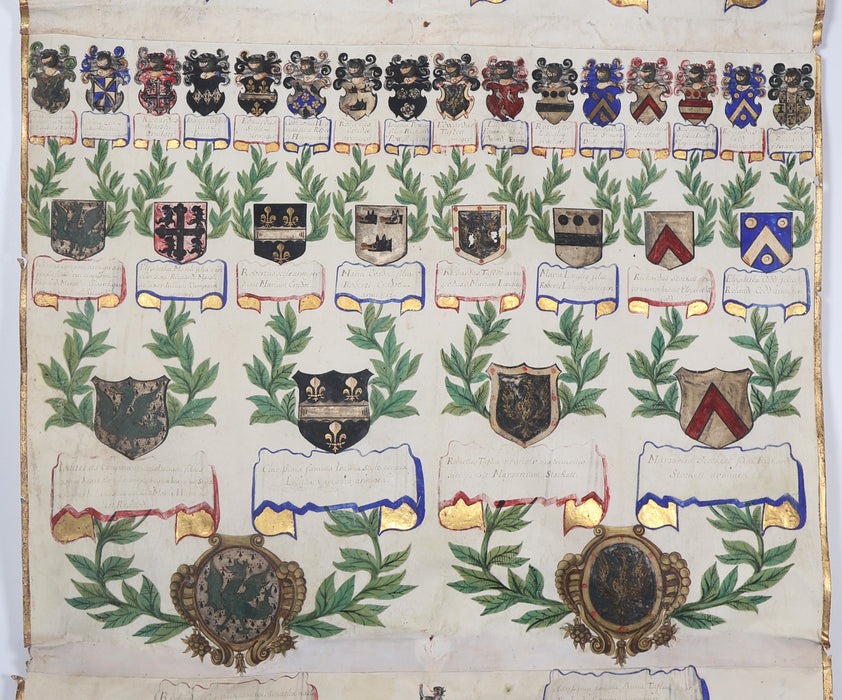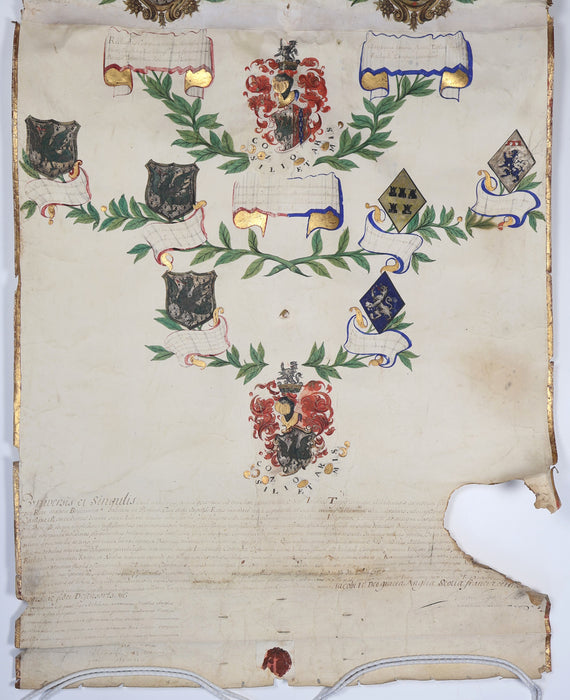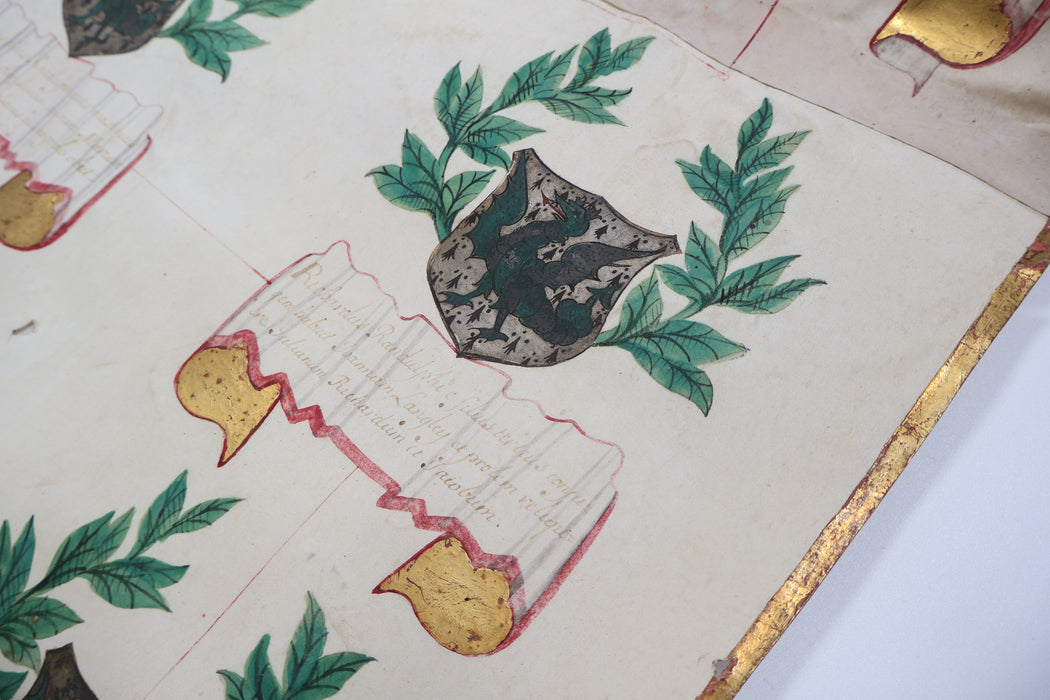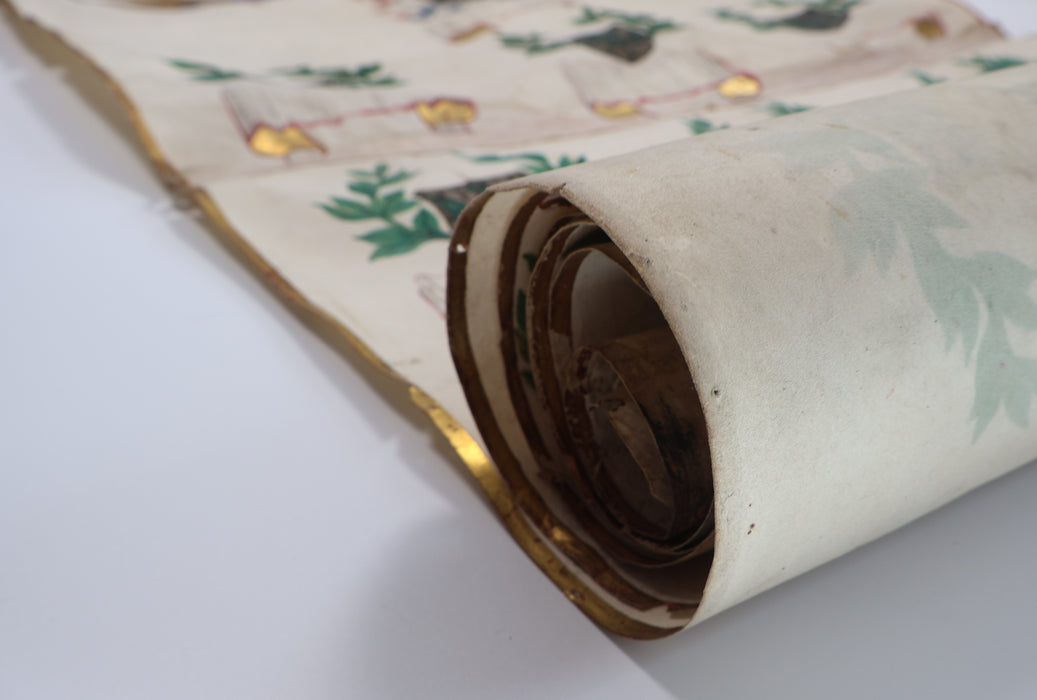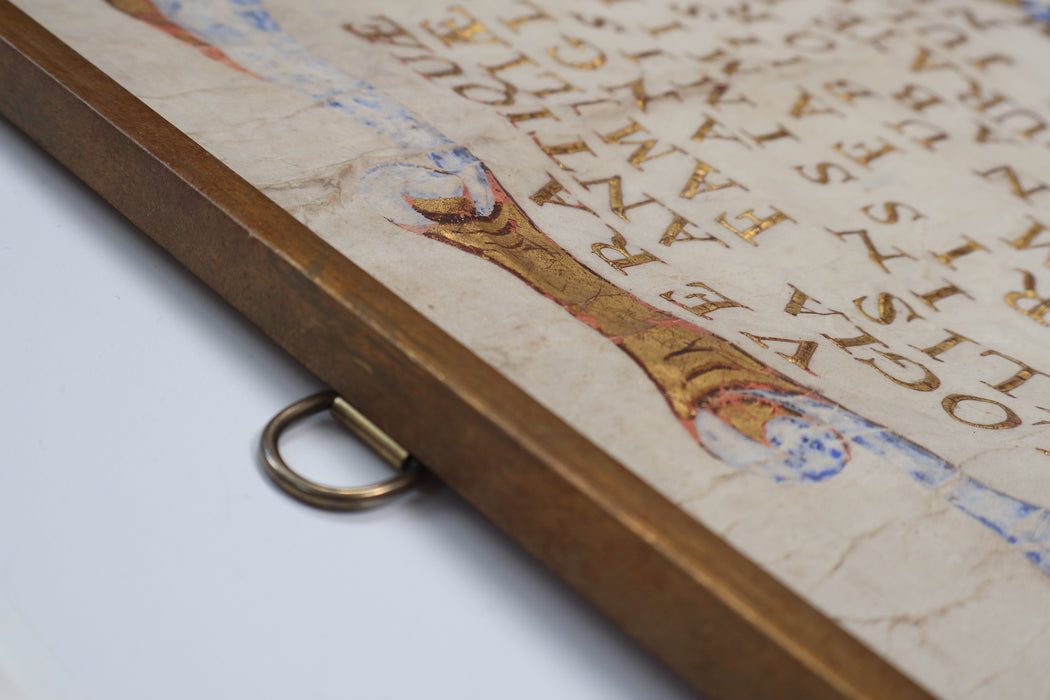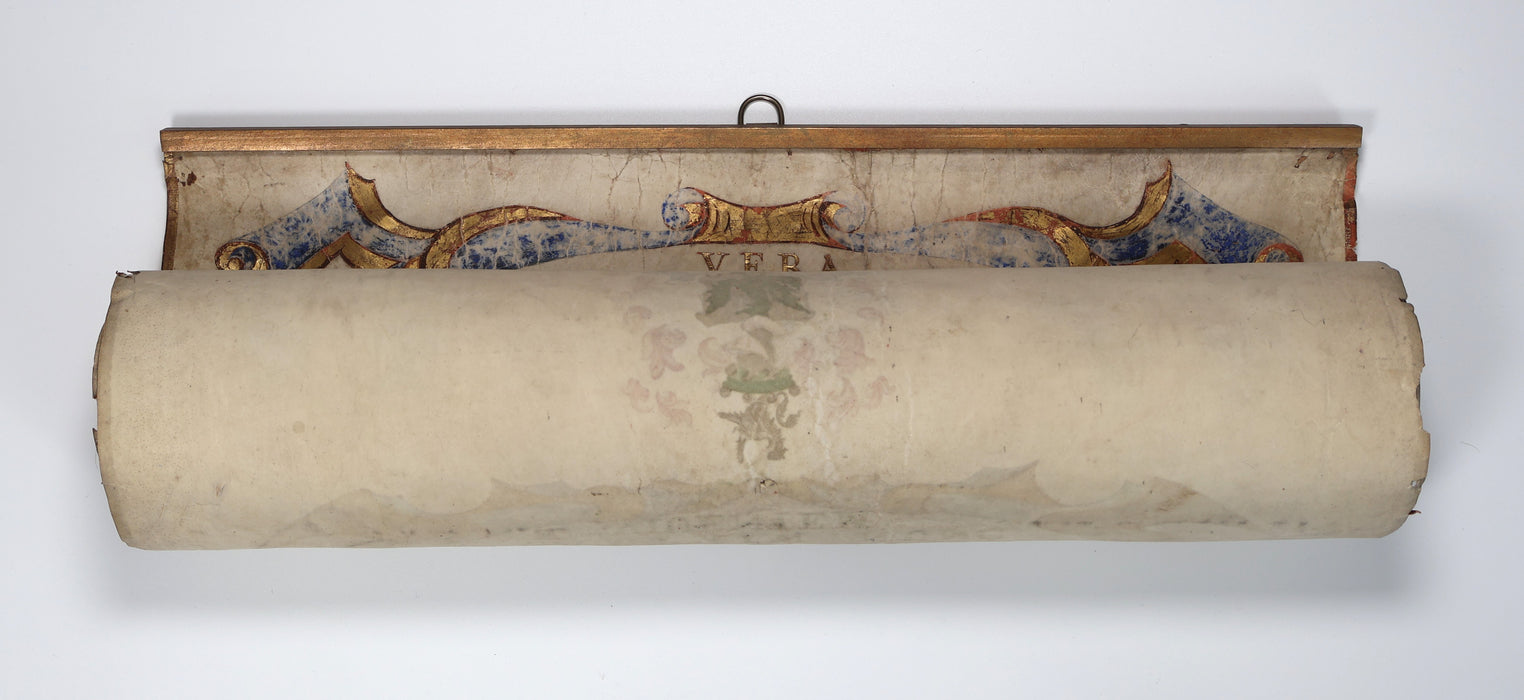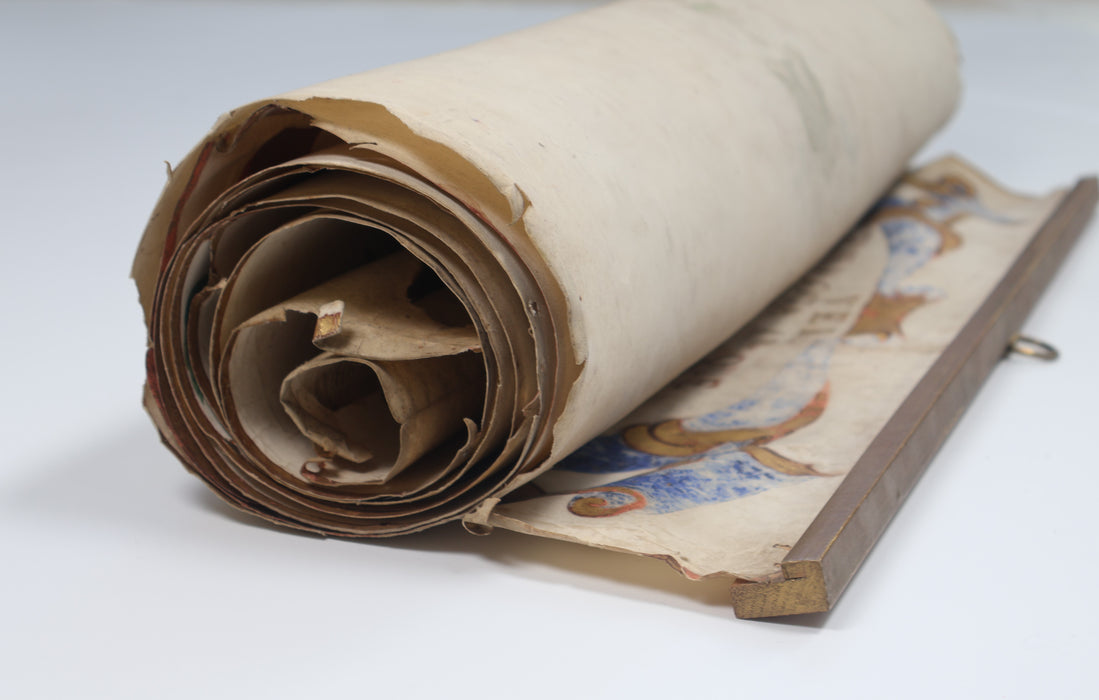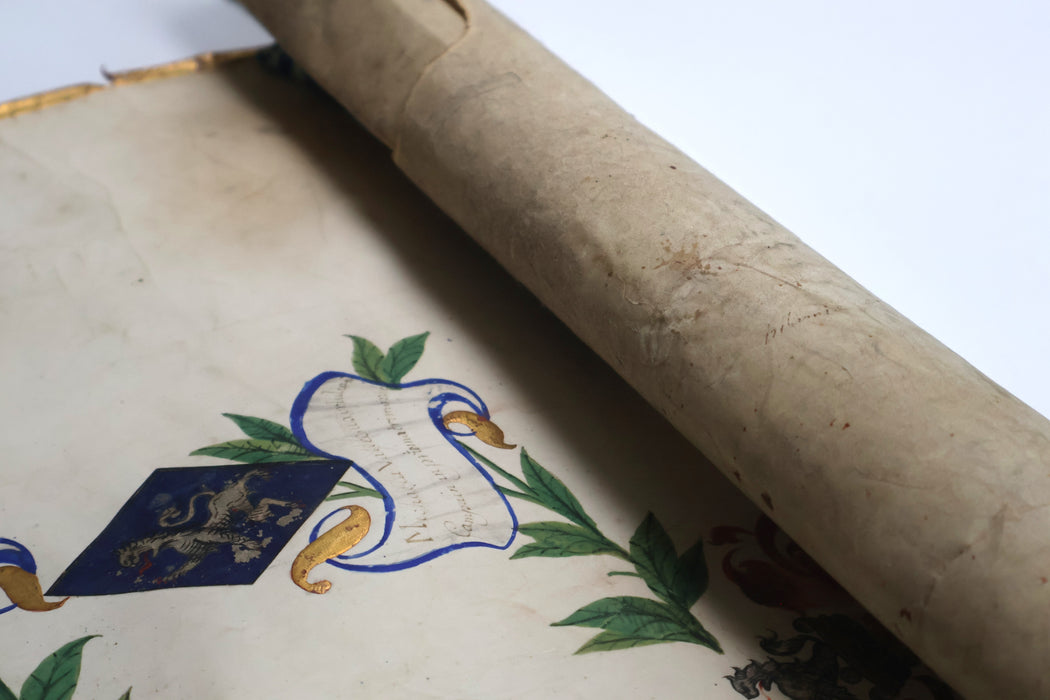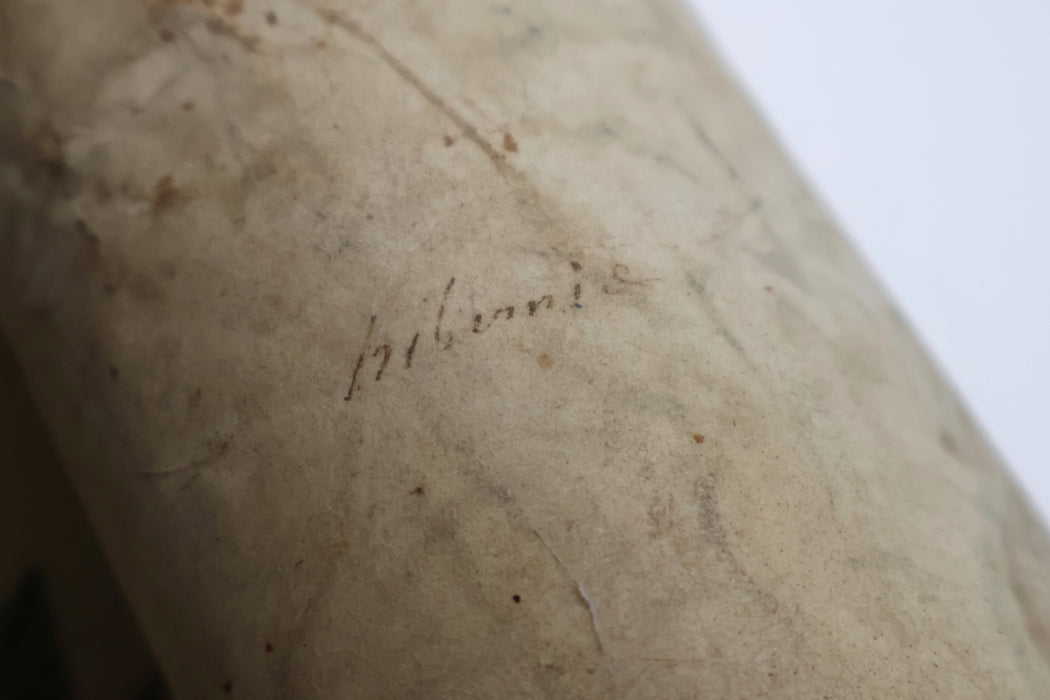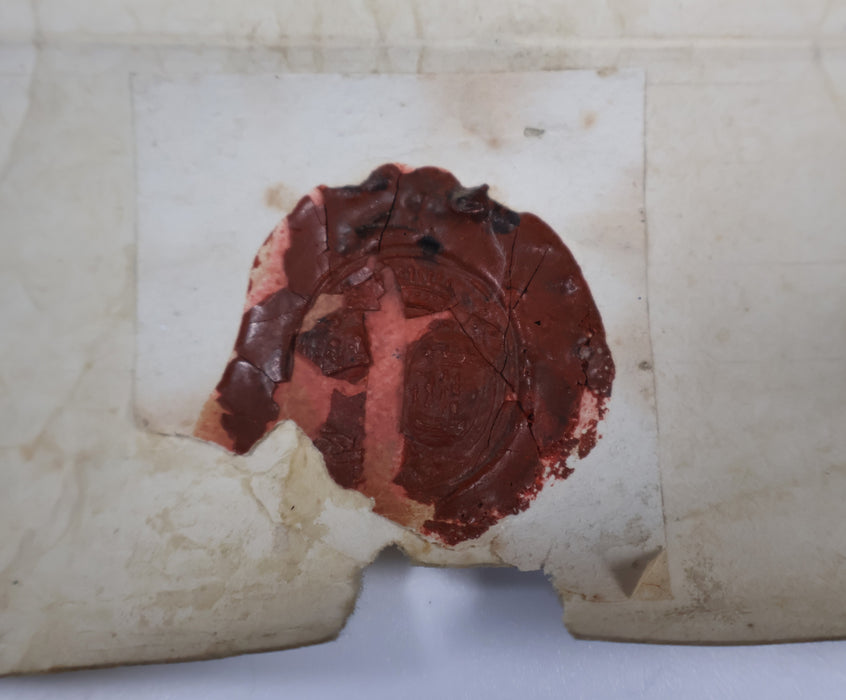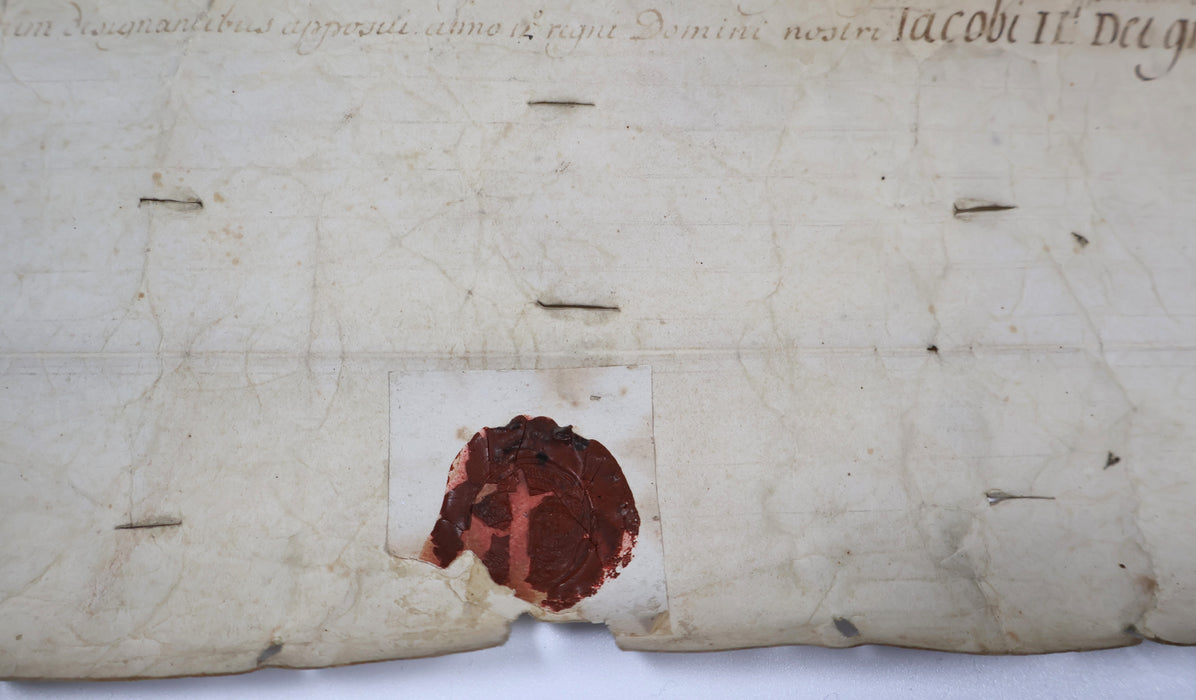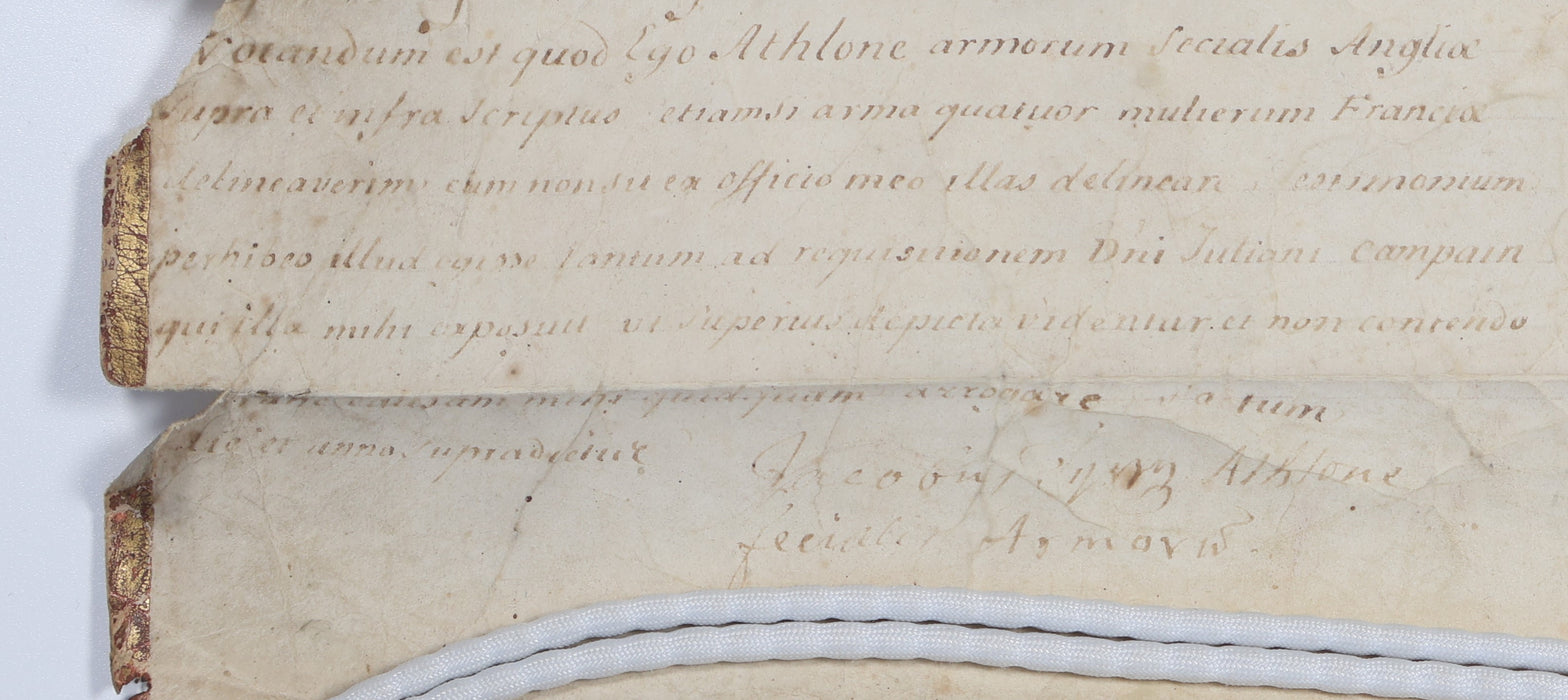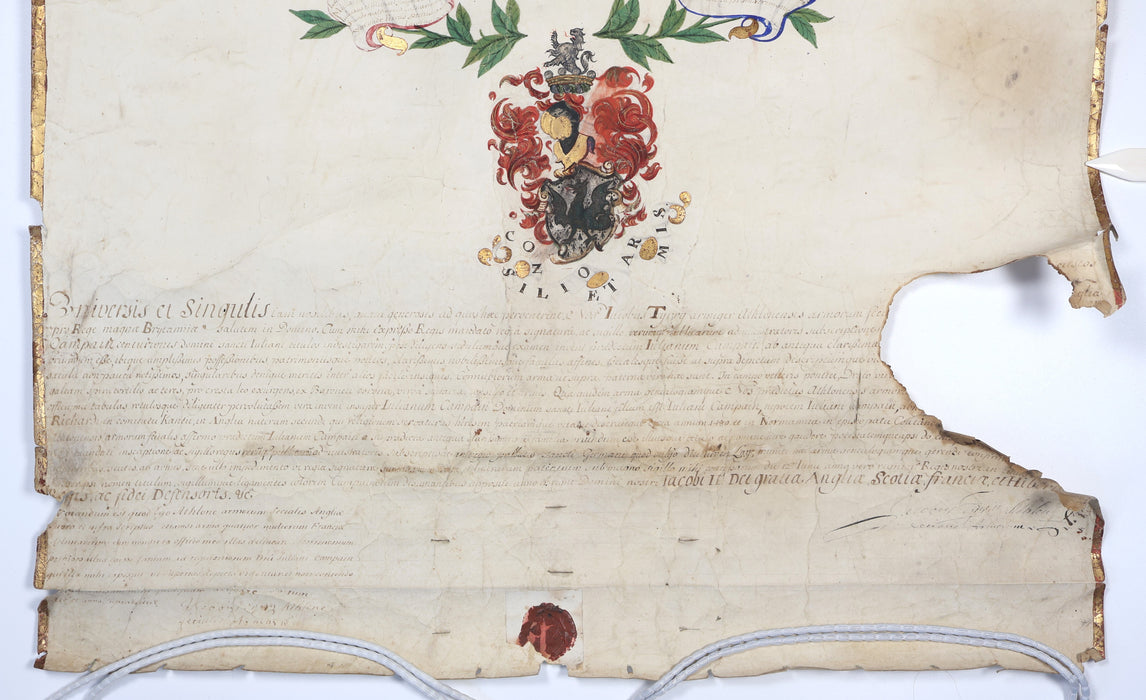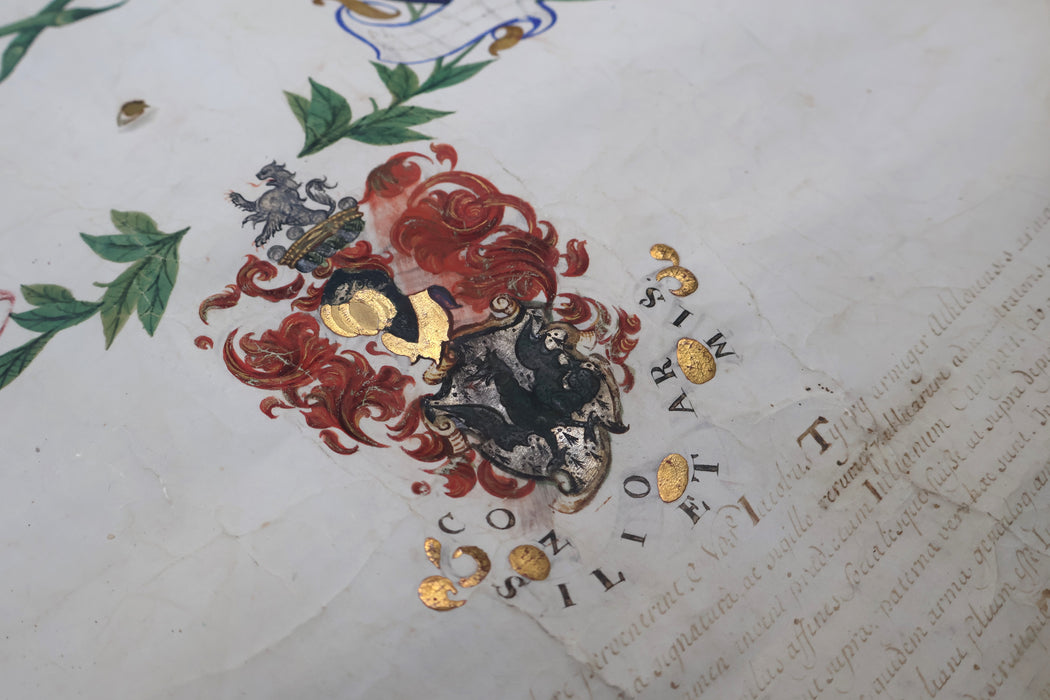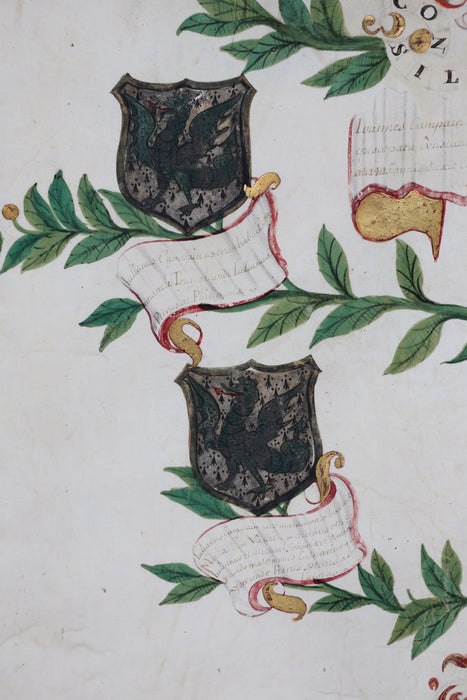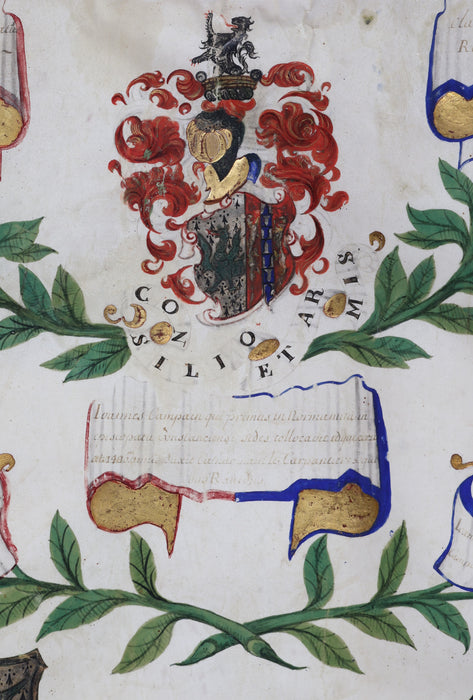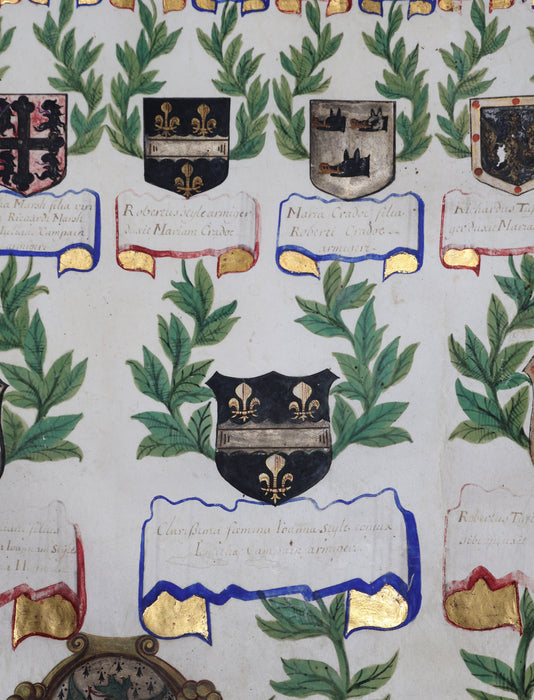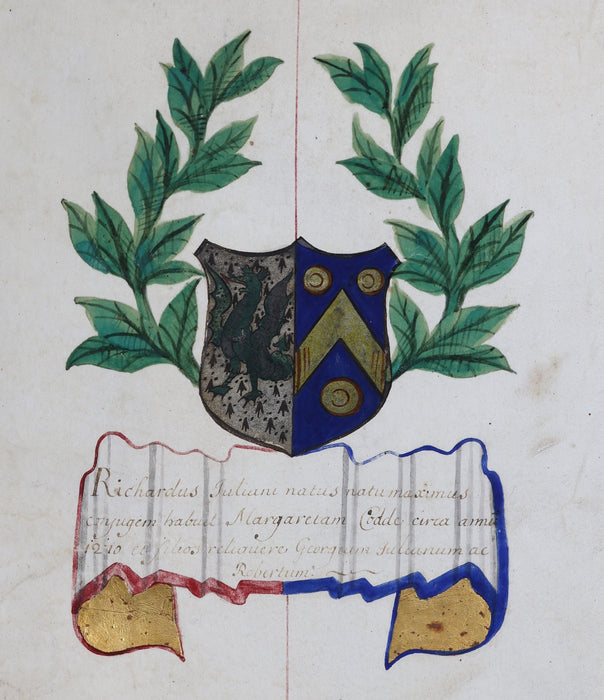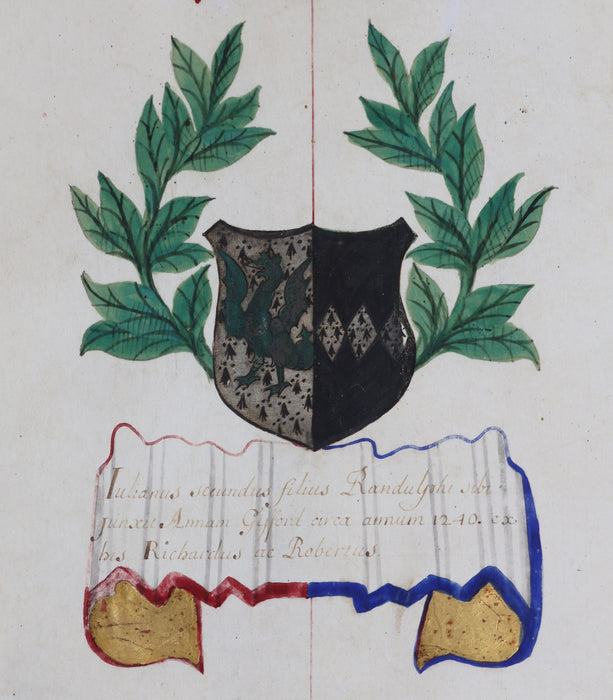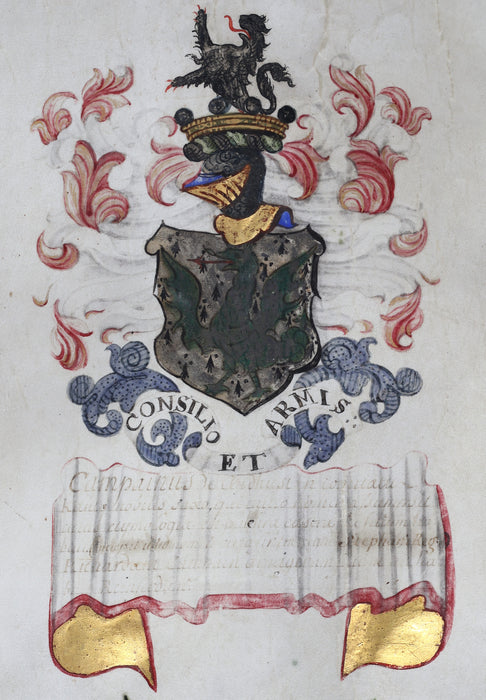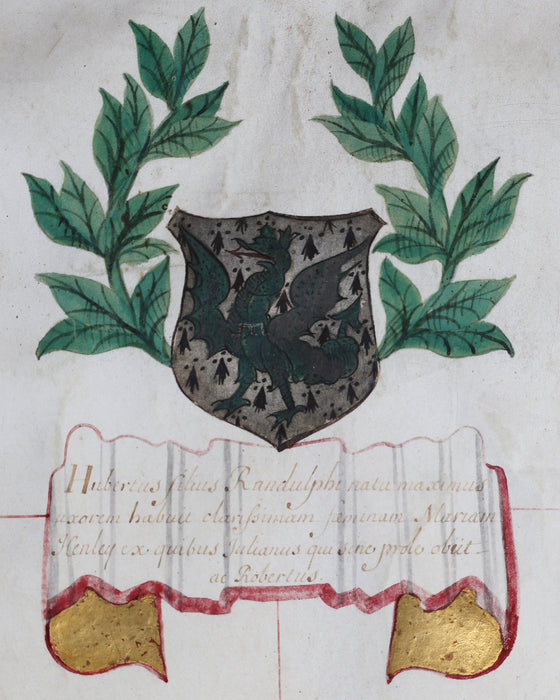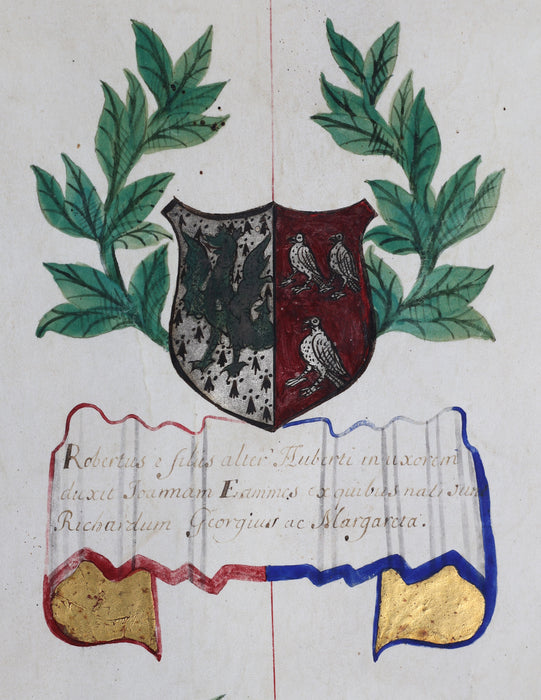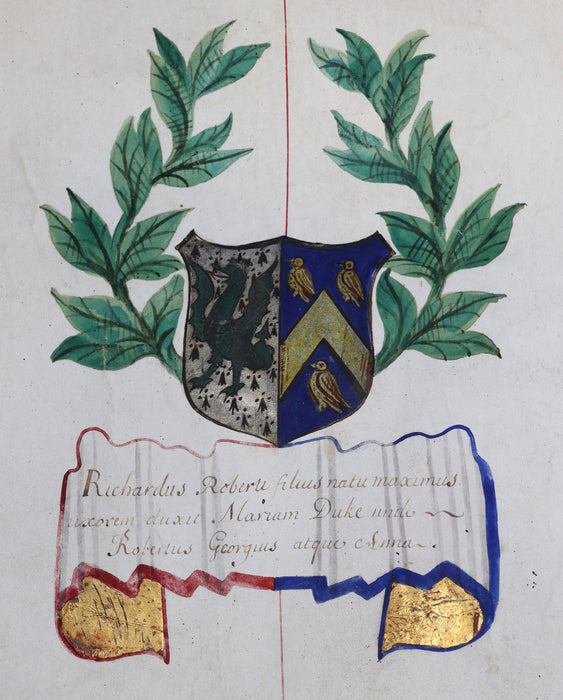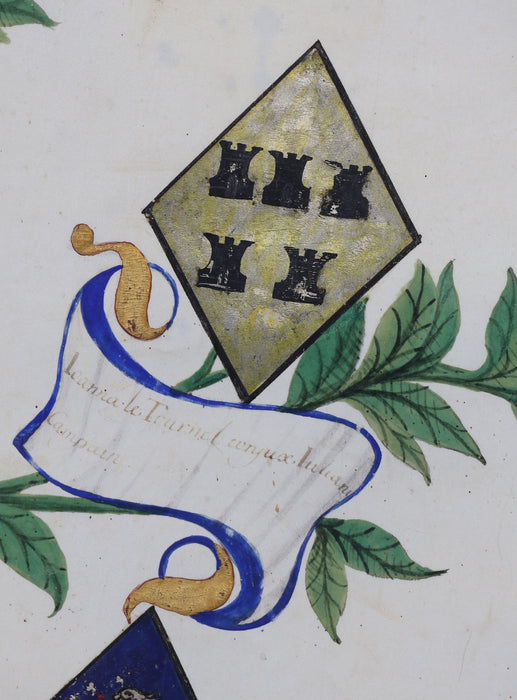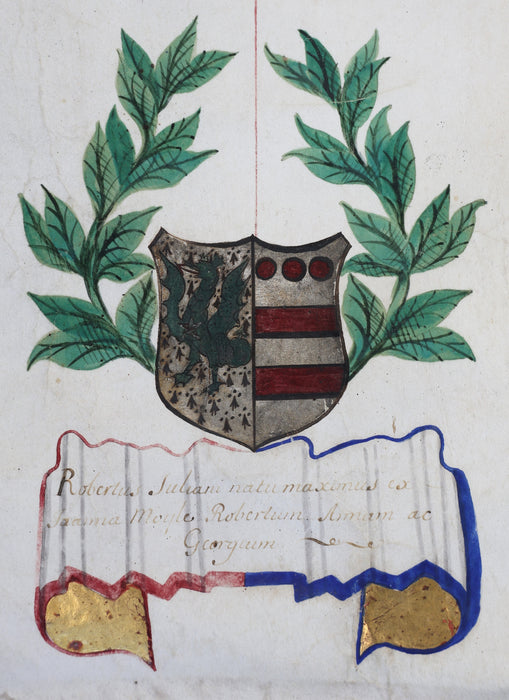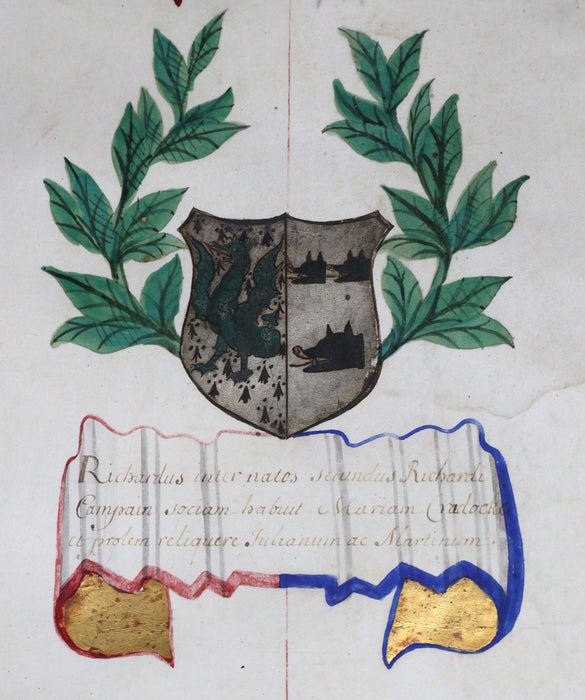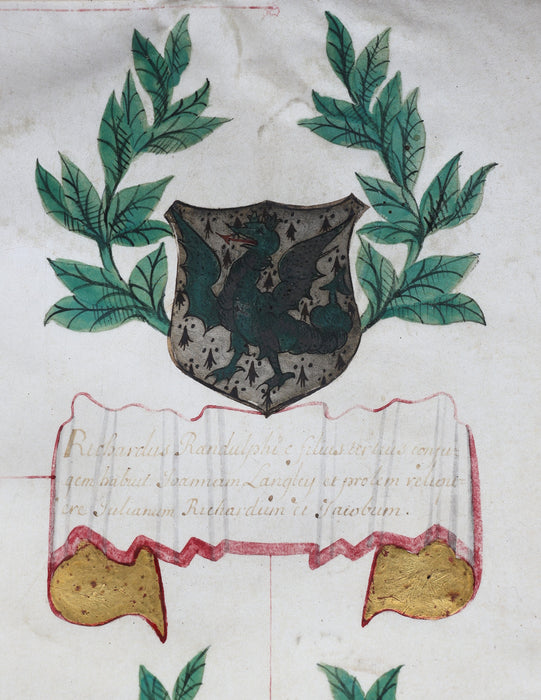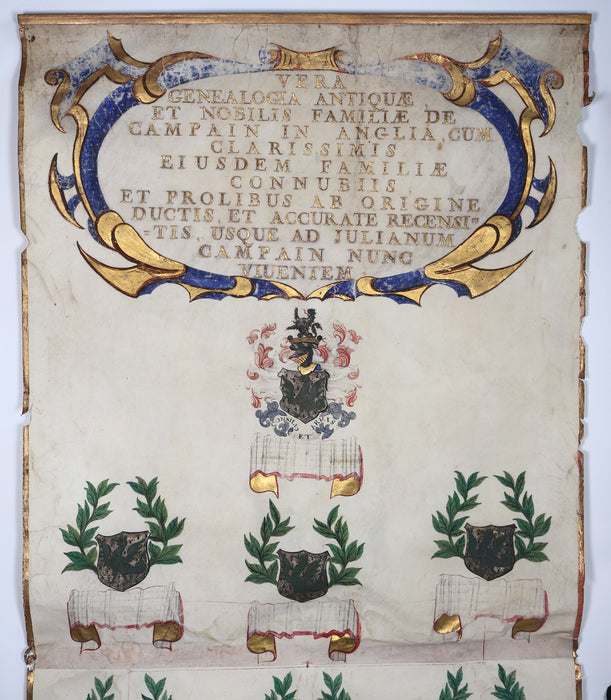
EXILED KING JAMES II GRANTS ARMS - FRENCH FAMILY CHAMPIONS ENGLISH DESCENT
A more detailed discussion (including bibliography) is available here
[James Terry (1660-1725), Athlone Herald; Julien [Julian] Campain]: Vera genealogia antiquae et nobilis familiae de Campain In Anglia cum clarissimis eiusdem familae connubiis et prolibus ab origine ductis et accurate recenistis usque ad Julianum Campain nunc viuentem. Saint-Germain-en-Laye, France, late 1699 or early 1700.
This highly ornate and impressive document, which spans nearly three metres and is decorated with over 50 illuminated coats of arms, represents a French family’s bid to proclaim their noble English heritage while King James II was exiled in France. Having been deposed in 1688 and replaced by his Protestant daughter and son-in-law (Mary II and Willliam III), the displaced Catholic king continued to grant arms even from across the Channel. This roll tells a fascinating, and very international story. A British king, exiled in France, grants the Frenchman Julien Campain the right to use an English coat of arms, as facilitated by an Irish herald who had Spanish connections. In a curious symmetry—which may not in fact be a coincidence—the English family with whom Campain was so eager to align himself included a Jacobite spy. The roll is remarkable survival; we have been able to locate only one comparable example.
Details
Manuscript roll (c.2700 x c.610 mm).
Layout and decoration: Title consists of twelves lines written in majuscule letters and chrysography, all within a gold and blue framing ornament. 54 illuminated coats of arms in varying sizes, of which 53 have a scroll underneath. Lines of descent indicated with thin red lines and/or large green foliage. 20 lines of text at end of roll, signed twice at end by James Terry. Red wax seal at lower edge on a square fragment adhered to the roll. Gold border to left and right edges.
Construction: four pieces of parchment, apparently once stitched together at the joins (sewing holes extant). The sewing was replaced with adhesive at a later stage. Adhered at top edge to a gilt wooden bar with metal hook; the hanging mechanism quite possibly added when the sewing was replaced.
Hands: Mostly written on one side and by a single hand, with some faded text overwritten by later hand(s). ‘Hiberniae’ added in a small hand to verso.
Condition: In good condition overall, with the colours vibrant and the text mostly still legible (some text faded and/or overwritten; UV light required to read at times). One burn hole at end of roll with some loss to twelve lines of text. Small tears and losses to outer margins, affecting the gold border and opening word of about five lines of text at end of document. Some cracking and flaking to gold and damage to other colours. Warping to parchment particularly at joins, a few small patches of mould, generally in blank areas, soiling to verso. A small number of puncture marks(?) in blank areas. Hanging seal(s) possibly removed to judge by six slits at end of document. Extant seal partially lacking.
Provenance: private collections (family in Normandy).

